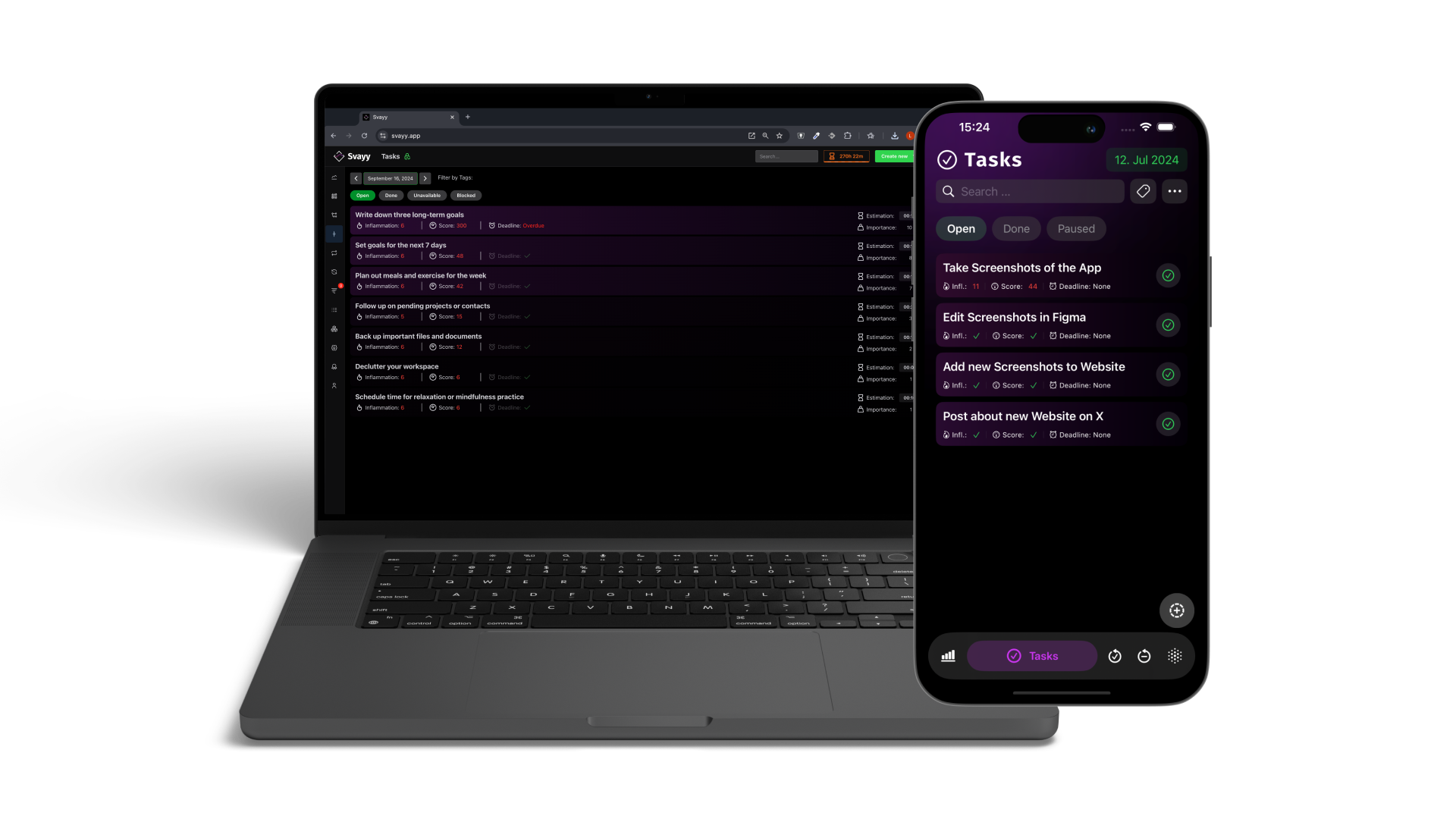Mastering Tasks #1: The Science of Deadlines

Deadlines play a crucial role in our lives, driving productivity, shaping priorities, and guiding progress. However, setting deadlines that are scientifically sound can significantly impact the outcomes of our tasks and projects. In this article, we'll explore how to leverage Svayy's Task feature to set deadlines effectively and optimize your productivity using proven scientific principles.
Understanding the Science of Deadlines
Effective deadline setting is grounded in psychology, neuroscience, and behavioral economics. Research suggests that deadlines serve as powerful motivators, activating the brain's reward system and increasing focus and effort towards task completion. However, setting deadlines too far in the future can lead to procrastination, while overly tight deadlines can induce stress and decrease performance.
The Optimal Deadline Formula
To set deadlines that maximize motivation and productivity, consider the following factors:
1. The Zeigarnik Effect
The Zeigarnik Effect, named after psychologist Bluma Zeigarnik, suggests that unfinished tasks create a state of tension in the mind, leading to increased cognitive processing and motivation to complete the task. Leveraging this effect, setting shorter deadlines can capitalize on the inherent drive to resolve unfinished business, boosting productivity.
2. Parkinson's Law
Parkinson's Law states that work expands to fill the time available for its completion. By imposing constraints on time through shorter deadlines, you can prevent tasks from ballooning in scope and complexity. This principle underscores the importance of setting realistic, yet challenging deadlines to maintain focus and prevent procrastination.
3. The Yerkes-Dodson Law
The Yerkes-Dodson Law suggests that performance increases with arousal or stress up to a point, after which it declines. This inverted U-shaped curve illustrates the delicate balance between challenge and stress. Setting deadlines that fall within the optimal arousal zone can stimulate peak performance without overwhelming individuals with excessive stress.
Applying Scientific Deadline Setting with Svayy
Now, let's explore how to implement these principles using Svayy's Task feature:
1. Break Down Tasks
Break down larger tasks into smaller, more manageable subtasks. This not only enhances clarity but also allows for more accurate estimation of time required for completion. By utilizing Svayys Dependency feature you can create Task chains. You can also manage them by using the Task splitting functionality to break down your big Tasks into smaller, more managable Tasks.
2. Set Realistic Deadlines
Utilize Svayy's Task feature to assign deadlines that align with the optimal deadline formula. Consider the complexity of the task, your familiarity with the subject matter, and potential obstacles or interruptions.
3. Prioritize Tasks
Use Svayy's prioritization features to rank tasks based on urgency and importance. Allocate deadlines accordingly, ensuring that critical tasks receive appropriate attention and are completed in a timely manner. Use Importance to rank order your Tasks. Importance is a multiplicator for a Tasks Score.
4. Monitor Progress
Regularly track your progress on tasks using Svayy's tracking tools. Adjust deadlines as needed based on your pace of work, unforeseen challenges, or changes in priorities. You can do this by looking into your Insights for daily and overall progress. Importance, Deadlines and availability all influence a Task's Score, which makes it a perfect measurement unit for you to monitor your progress.
Conclusion
By incorporating scientific principles into your deadline-setting process with Svayy, you can enhance motivation, productivity, and ultimately, the success of your endeavors. Whether you're tackling personal projects, professional assignments, or academic tasks, mastering the art of setting scientifically sound deadlines will empower you to achieve your goals with efficiency and effectiveness.